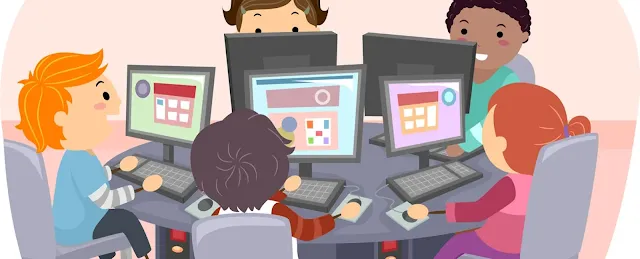The world we live in today is driven by technology. We use it in almost all aspects of our lives, from communicating with loved ones and colleagues, to making purchases and accessing information. It has significantly impacted the way we learn and acquire knowledge. This article aims to explore the impact of technology on human learning.

Technology and its impact on human learning
Technology has transformed the way we learn, making knowledge acquisition more accessible, convenient, and effective. With the advent of the internet, anyone can access a vast amount of information from anywhere in the world, at any time. This means that people can learn on their own terms, whether they prefer a structured or self-directed learning approach. This has led to the development of online learning platforms, which have become increasingly popular in recent years.
One significant impact of technology on learning is that it has increased access to education. Online learning platforms such as Coursera, edX, and Udemy have made education more accessible, allowing people to take courses from some of the world's top universities from the comfort of their own homes. This has enabled individuals who would not have had the opportunity to attend university to acquire valuable knowledge and skills that they can apply in their careers.
Another significant impact of technology on learning is that it has made learning more engaging and interactive. With the use of multimedia resources such as videos, audio, and interactive simulations, learners can now engage with content in a more immersive way. This approach has been proven to be more effective in facilitating learning and knowledge retention than traditional methods such as lectures and textbooks.
Technology has also allowed for personalized learning, where learners can tailor their learning experience to their needs and preferences. With the use of Artificial Intelligence and Machine Learning, learning platforms can analyze a learner's performance and provide personalized recommendations for content and activities that will help them learn better. This approach has been shown to be more effective in promoting knowledge retention and improving learning outcomes.
Furthermore, technology has also facilitated collaborative learning. Online platforms such as forums, chat rooms, and social media allow learners to connect with others from different parts of the world, sharing knowledge and experiences. This approach has been shown to be effective in promoting critical thinking, problem-solving, and teamwork skills.
The impact of technology on traditional learning methods
While technology has significantly impacted the way we learn, it has also impacted traditional learning methods. The traditional approach to learning, which involves attending classes, listening to lectures, and reading textbooks, has been challenged by technology.
For example, the use of video lectures has become increasingly popular in recent years. While this approach allows learners to access content at their own pace, it has also been criticized for its lack of interaction and engagement. Similarly, the use of textbooks has been challenged by online resources, which provide more up-to-date and interactive content.
Another impact of technology on traditional learning methods is the use of online assessments. With the use of online platforms, learners can now take tests and quizzes online, which are automatically graded. This has made assessment more convenient and efficient, but it has also raised concerns about cheating and the accuracy of the grading system.
Furthermore, technology has also impacted the role of teachers and instructors in the learning process. With the availability of online resources and personalized learning platforms, learners can now take control of their learning experience, making teachers and instructors less central to the learning process.
The impact of technology on human learning - advantages and disadvantages
The impact of technology on human learning has both advantages and disadvantages. The following are some of the advantages and disadvantages of technology in learning.
Advantages of technology in learning
Increased access to education- technology has made education more accessible, allowing people to learn from anywhere in the world at any time.
Personalized learning- technology has enabled learners to tailor their learning experience to their needs and preferences, promoting more effective learning outcomes.
Engaging and interactive learning- technology has made learning more engaging and interactive through multimedia resources such as videos, audio, and simulations.
Collaborative learning- technology has facilitated collaborative learning, allowing learners to connect with others from different parts of the world, promoting teamwork skills.
Efficient assessment- technology has made assessment more convenient and efficient, allowing learners to take tests and quizzes online, which are automatically graded.
Disadvantages of technology in learning
Distraction- with the abundance of technology, learners may become distracted and lose focus on their learning goals.
Dependence on technology- learners may become too reliant on technology, leading to a lack of critical thinking and problem-solving skills.
Limited social interaction- online learning may limit social interaction, which is an essential aspect of learning.
Inequity- not everyone has access to technology and online learning platforms, leading to inequity in access to education.
Potential for cheating- the use of online assessments may lead to cheating, raising concerns about the accuracy of grading and the credibility of the education system.
Conclusion
Technology has significantly impacted the way we learn and acquire knowledge. It has made education more accessible, engaging, and interactive, enabling learners to tailor their learning experience to their needs and preferences. However, it has also challenged traditional learning methods and raised concerns about the role of teachers and instructors in the learning process. As with any tool, technology has both advantages and disadvantages, and it is up to us to use it in a way that maximizes its benefits while minimizing its drawbacks. Overall, technology has the potential to revolutionize the education system, making education more accessible, equitable, and effective.


0 Comments